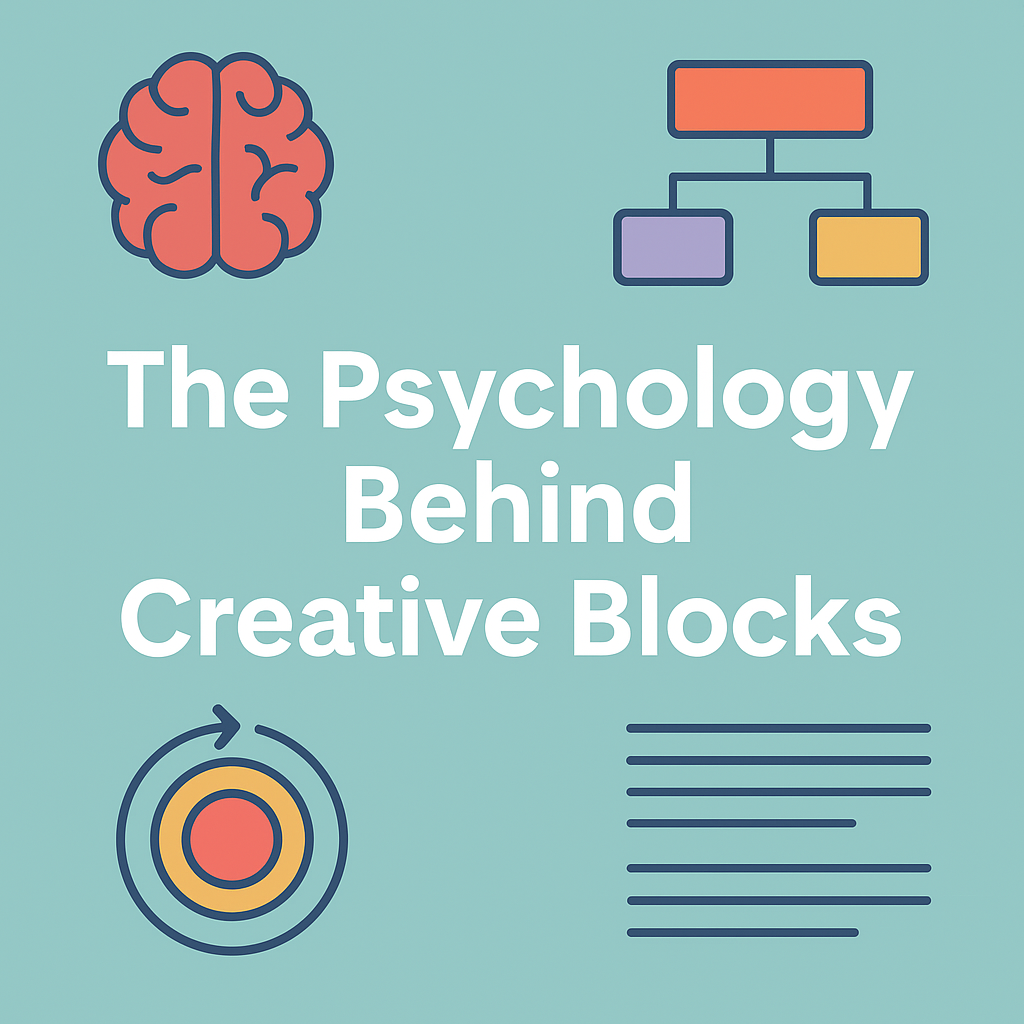Exploring theory-informed insights and a practical method for working with creative resistance
Creative blocks are widely misunderstood. Many people assume they result from lack of motivation, poor planning, or internal resistance. But beneath the surface, creative disconnection often holds layers of psychological meaning. What appears to be procrastination may in fact be a signal from your nervous system or subconscious, pointing toward unresolved stress, misaligned expectations, or outdated creative frameworks.
In this article, we explore five psychological perspectives that help explain why creativity sometimes shuts down, even for highly engaged and experienced artists. Each perspective offers a unique lens. Together, they can deepen your understanding of what your “block” might actually be trying to tell you. And at the end, I’ll introduce a reflective framework I use with clients to help them reenter their creative work gently, rather than forcing their way through it.
1. The Block as a Protective Freeze Response
From a somatic psychology perspective, a creative block may be the result of the body entering a freeze state. This occurs when the nervous system perceives a threat—emotional, psychological, or physical—and responds by immobilizing activity. Rather than fighting or fleeing, the body shuts down engagement. This is often experienced as numbness, brain fog, dissociation, or an inability to initiate.
In creative practice, freeze can show up as looking at your tools and feeling nothing. It may be difficult to describe. You are not consciously avoiding the work. You are simply unable to approach it. Understanding this as a physiological response, rather than a character flaw, is an essential step toward recovery.
2. The Block as Unconscious Content Regulation
Psychoanalytic theory views blocks through the lens of repression and defense. When creative work comes close to accessing painful or unresolved content, the unconscious mind may intervene to stop the flow. In this view, the block is not a failure of creativity. It is a protective boundary between you and something you are not ready to integrate.
For example, someone working on a memoir might suddenly lose interest in the project as they approach a difficult memory. Or a poet may feel blank when trying to write about loss. These interruptions are not random. They signal areas where care, processing, or containment is needed before the work can continue.

3. The Block as Learned Avoidance
From a behavioral perspective, creative inhibition can be shaped by past reinforcement. If past efforts were met with criticism, embarrassment, or emotional distress, the brain may begin to associate creative action with discomfort. Over time, avoidance becomes a learned coping strategy. You begin to protect yourself by staying away from the source of perceived pain—even if that source is something you love.
This theory highlights how the creative process is shaped not only by internal desire, but also by external feedback and memory. Understanding the origin of these associations can help interrupt the cycle and reframe your creative experience in safer, more compassionate terms.
4. The Block as Identity Disruption
Many blocks are not about the work itself, but about the person who is trying to make it. When your identity shifts—due to illness, grief, aging, professional changes, or personal growth—you may no longer recognize the voice or purpose that once drove your creativity. This leads to a kind of rupture, not just in your routine, but in your understanding of what the work is for.
Someone who used to thrive on deadlines may no longer have the capacity to sustain that pace. Or someone who built their creative life around audience feedback may no longer find that external validation meaningful. The block, in this case, is a signal that your creative self is evolving and needs new language, rhythms, and structures to support it.
5. The Block as Burnout, Not Blockage
Sometimes what we name as a block is actually burnout. Emotional, mental, and sensory fatigue can dull your access to creativity. You may still care about the work, but the energy required to engage with it has been depleted. Burnout often follows prolonged overexertion, especially in fields where creative labor is expected to be constant, visible, or monetized.
Burnout is not just exhaustion. It also includes disconnection, cynicism, and the sense that your work no longer matters. In these moments, trying harder does not help. Recovery depends on rest, boundary-setting, and reorienting toward creative practices that replenish rather than drain.

One Framework That Helps: The Six Dimensions of Creative Health
In my work with clients, I use a reflective framework that helps us explore what is happening beneath the surface of creative silence. It includes six dimensions where health impacts creativity. These are:
Process: How you approach the act of making
Productivity: How much you can produce, and at what pace
Medium: What tools, forms, or methods feel accessible
Content: What subjects feel possible to explore
Self-perception: How you view yourself when not actively creating
Sustainability: Whether your practice can continue without burnout
When someone comes into a session saying they feel blocked, we often discover that one or more of these dimensions has shifted due to changes in health, identity, or circumstance. The framework helps us move away from shame and toward understanding. Instead of asking, “Why can’t I just do the work?” we ask, “What is different in my internal or external world that the work is responding to?”
This reframing is powerful. It allows for care. It allows for creativity to return when it is ready. And it allows the person to remain in relationship with their practice, even if they are not actively producing.
If you would like help exploring your own creative silence, I offer one-on-one support grounded in psychological insight and lived understanding. This is not a place for fixing. It is a space for listening and re-entry.
Book a Conversation Today
Your block is not a problem to eliminate. It is a signal worth understanding.

Leave a Reply